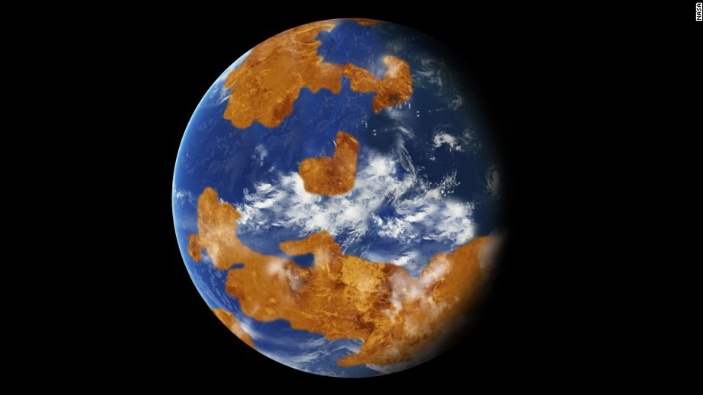It's time to revisit Venus, our closest planetary neighbour.
Two new missions to Earth's twin have been greenlit by NASA via the agency's Discovery Program. These missions, which were the two finalists selected from four concepts NASA highlighted in February 2020, will shed light on how Venus became the inhospitable world it is today, despite the fact that it shares many characteristics with Earth.
One mission would focus on the Venusian atmosphere, while the other would map the planet's surface.
Venus may have been the first habitable world in our solar system, including an ocean and climate similar to Earth -- but something happened to turn it into a planet with temperatures hot enough to melt lead.
Venus likely maintained stable temperatures and hosted liquid water for billions of years before an event triggered drastic changes in the planet, according to a 2019 study. The study author, physical scientist Michael Way at the NASA Goddard Institute of Space Science in New York City, also coauthored a 2016 study about climate and oceans on Venus in its past.
Now, Venus is a mostly dead planet with a toxic atmosphere 90 times thicker than ours and surface temperatures that reach 864 degrees Fahrenheit (462 degrees Celsius).
Only two NASA missions have visited Venus -- Pioneer in 1978 and Magellan in the early '90s.
The ocean was first suggested by NASA's Pioneer mission. But given its placement as the second planet from the sun, Venus wasn't considered conducive to sustaining an ocean.
"It is astounding how little we know about Venus, but the combined results of these missions will tell us about the planet from the clouds in its sky through the volcanoes on its surface all the way down to its very core," said Tom Wagner, NASA's Discovery Program scientist, in a statement. "It will be as if we have rediscovered the planet."
The mission DAVINCI+ stands for Deep Atmosphere Venus Investigation of Noble gases, Chemistry and Imaging Plus. It would be dedicated to analyzing Venus' atmosphere to determine how it formed and evolved. The initiative would also investigate the possibility of an ocean in Venus' past.
The mission's instruments, including cameras, would be protected from Venus' harsh environment by a descent sphere. It's designed to plunge down through the planet's thick atmosphere and send back the first high-resolution images of unique features on Venus. These features, called "tesserae," may be similar to continents on Earth, which means Venus may have plate tectonics.
The DAVINCI+ mission will be the first US-led mission to study the Venusian atmosphere since 1978.
Sign up for CNN's Wonder Theory science newsletter. Explore the universe with news on fascinating discoveries, scientific advancements and more.
Next up, VERITAS -- or Venus Emissivity, Radio Science, InSAR, Topography, and Spectroscopy -- would map the surface of the rocky planet in an effort to shed light on how it turned out so differently from Earth. Our world is often called Venus' twin because the planets are similar in size, but the modern comparisons stop there.
The mission can also provide insight about the geologic history of Venus. The orbiter, equipped with radar, could create 3D topography, allowing scientists to determine how active Venus is volcanically through plate tectonic processes. The spacecraft could also study infrared emissions coming off the planet's surface.
Both missions will carry technology demonstrations on them, including the Deep Space Atomic Clock-2 to enable autonomous spacecraft maneuvers on VERITAS, as well as the Compact Ultraviolet to Visible Imaging Spectrometer to measure ultraviolet light in the Venusian atmosphere, to be hosted by DAVINCI+.
Program, which is sponsoring these missions, encourages scientists and engineers to help us explore the solar system by designing new, imaginative mission concepts. Since 1992, the program has supported development for more than 20 scientific instruments and missions.
"We're revving up our planetary science program with intense exploration of a world that NASA hasn't visited in over 30 years," said Thomas Zurbuchen, associate administrator for NASA's Science Mission Directorate, in a statement.
"Using cutting-edge technologies that NASA has developed and refined over many years of missions and technology programs, we're ushering in a new decade of Venus to understand how an Earth-like planet can become a hothouse. Our goals are profound. It is not just understanding the evolution of planets and habitability in our own solar system, but extending beyond these boundaries to exoplanets, an exciting and emerging area of research for NASA."
Each mission will receive a $500 million award for development, and they will launch between 2028 and 2030.
- text by Ashley Strickland, CNN
Take your Radio, Podcasts and Music with you









